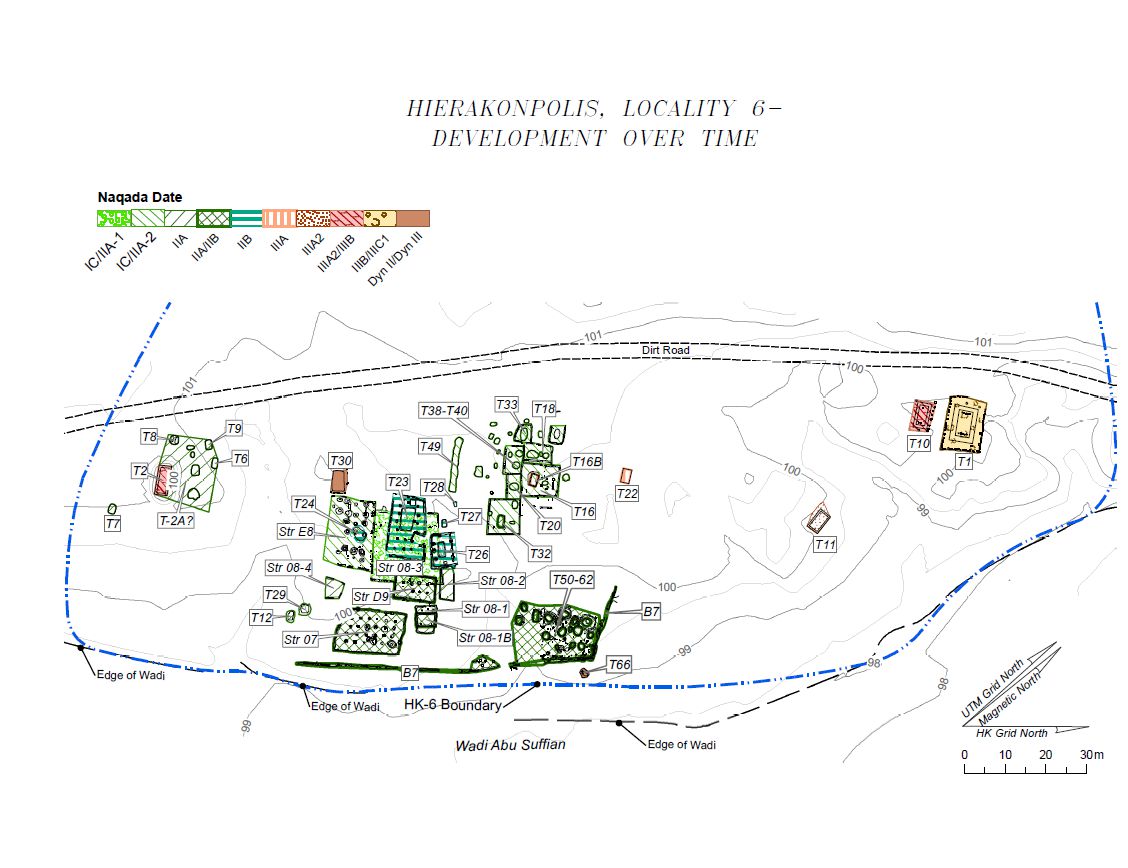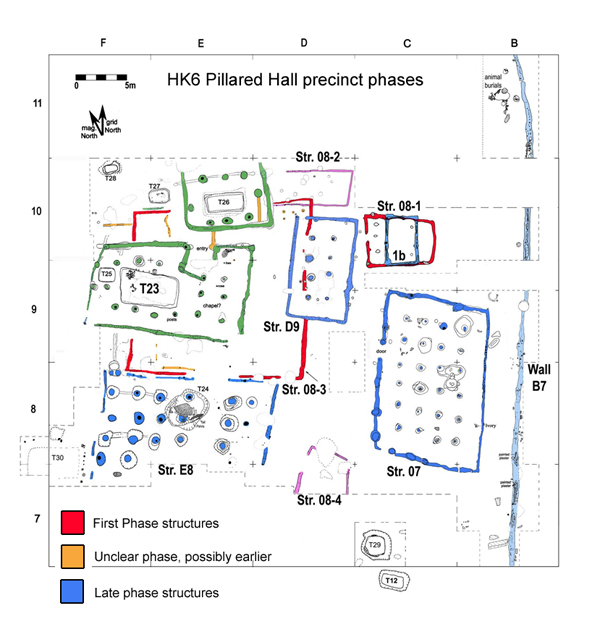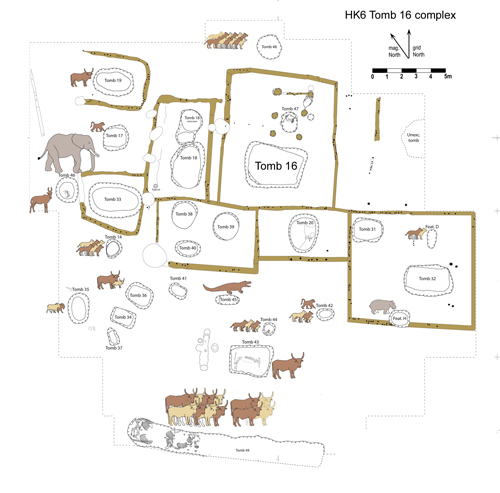
The "Kesh temple hymn" is one of the few Old Sumerian literary texts, which is preserved not just through manuscripts from the ED IIIa period (ca. 2600-2500 BC), but also through a high amount of manuscripts dating to the Old Babylonian period (ca. 1900-1600 BC).
The Keš temple hymn
"House founded by An, praised by Enlil, given an oracle by Mother Nintur!"
"The four corners of heaven became green for Enlil like a garden."
"House, great enclosure, reaching to the heavens"
"The house consumes many cattle; the house consumes many sheep."
"Ašgi the hero consumes the contents of the vessels (?)"
"House, at its upper end threefold indeed!"
"The first house." "The second house." ... "The eighth house."
 |
 |
| HK6 at Hierakonpolis |
Tomb 23 is the largest known tomb of the Naqada IIB period, which involved an enclosure wall all made of wooden posts surrounding a pillared superstructure above the tomb, on the east side of which was a special columned area called an offering chapel, based on the deposits of fine objects found in it. These objects include animal figures knapped from flint (an ibex and the head of a Barbary sheep), an ivory cylinder, which is possibly a mace handle, and more disturbingly a human vertebra with cut marks indicative of decapitation.
Further exploration of the adjacent areas in 2006-2007 revealed another large tomb (Tomb 26) with clear evidence of wooden superstructure (as well as a scorpion statuette and an imported wine jar), but more remarkable were the structures, below which there were no tombs, which took the form of multi-columned, or pillared, hall
These wooden buildings apparently stretched back for generations, as at least three building phases were detected as earlier structures were replaced over time by even grander structures. Of the eight structures known, the best preserved is Structure 07; 15m long and 10.5 meters wide, 24 wooden columns originally filled its interior.
 |
| HK6 at Hierakonpolis |
Tomb 16 is the largest known tomb of the Naqada IC-IIA period. More than 115 vessels have been recorded from it. Investigations from 2009-2011 revealed a number of wooden posts suggesting a substantial superstructure was raised above it, while six postholes along the north side marked a small offering chapel. And like Tomb 23, surrounding it all was a wood-post fence, but in the case of Tomb 16 it interconnected with a wider complex of enclosures containing a range of smaller tombs.
Animals, buried whole, include an African elephant, an aurochs (wild cattle), a pregnant hartebeest, a young hippopotamus, a crocodile, two baboons, 15 domestic cattle, two large goats, and 28 dogs– 52 animals in all (so far).
Perhaps not surprisingly the most prized appears to be the ten-year-old male African elephant (Tomb 33) and the aurochs (Tomb 19), both requiring extraordinary efforts to acquire as probably neither were locally available at the time. Both were found alone in large, fenced tombs, wrapped in vast amounts of linen and matting.
HK6 (Elite Cemetery) at Hierakonpolis = Keš
Despite its presence in the artistic record, no physical remains of ibex have been found at HK6.
References:
https://cdli.mpiwg-berlin.mpg.de/cdli-tablet/1902024/04/16 Takahiko Nakagawa